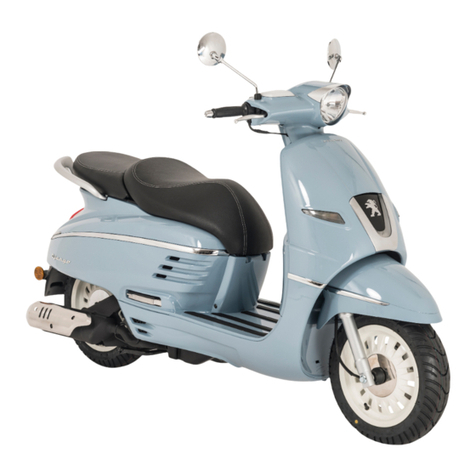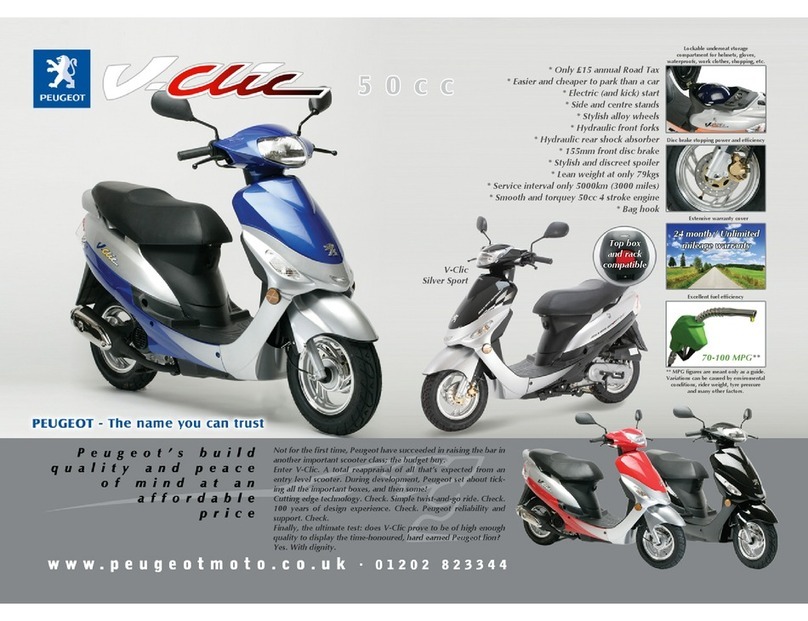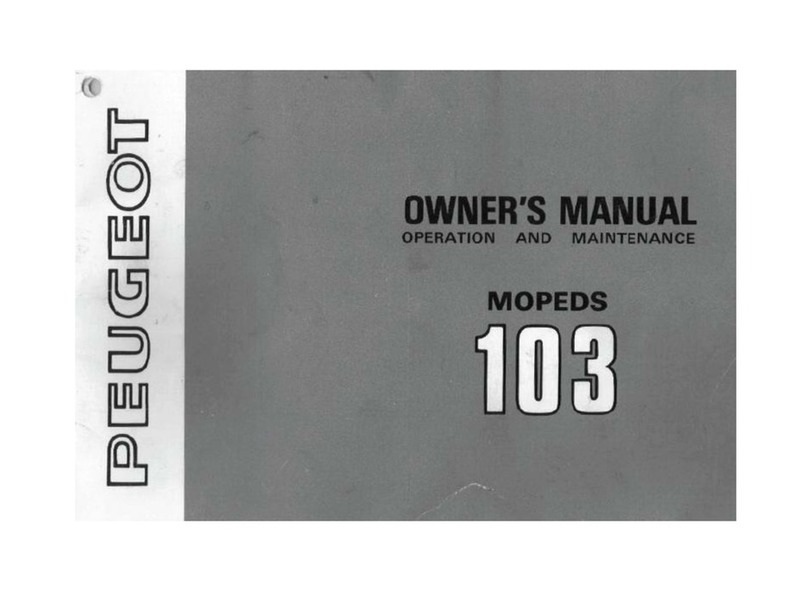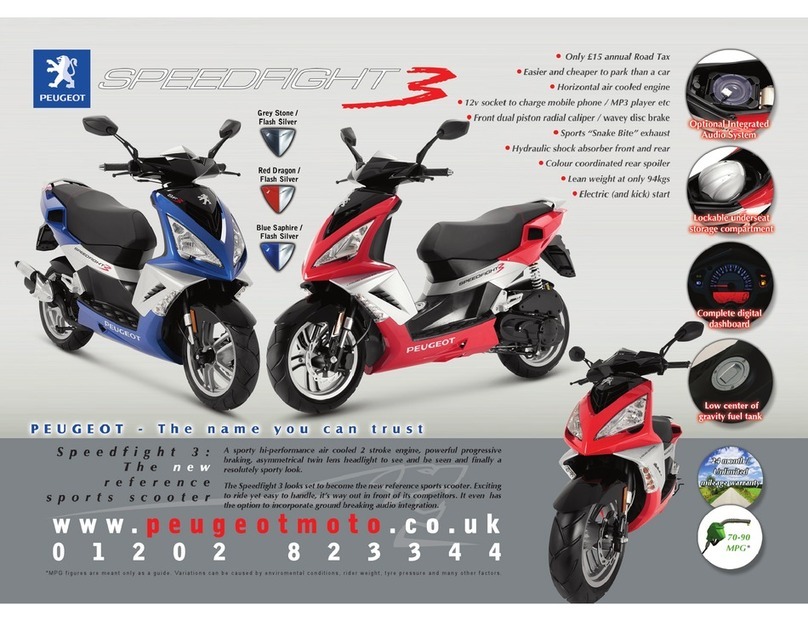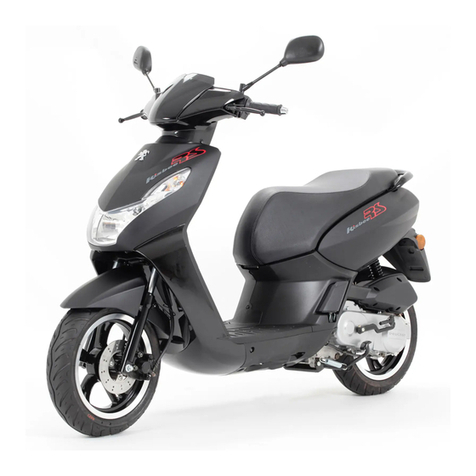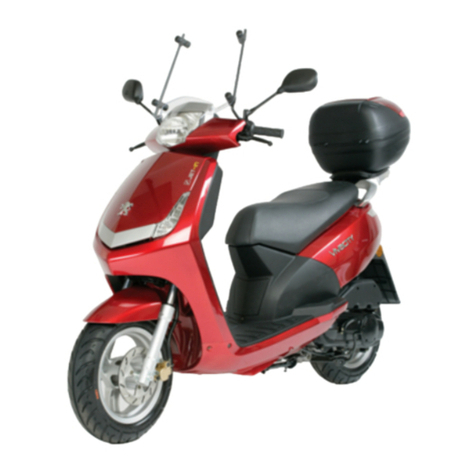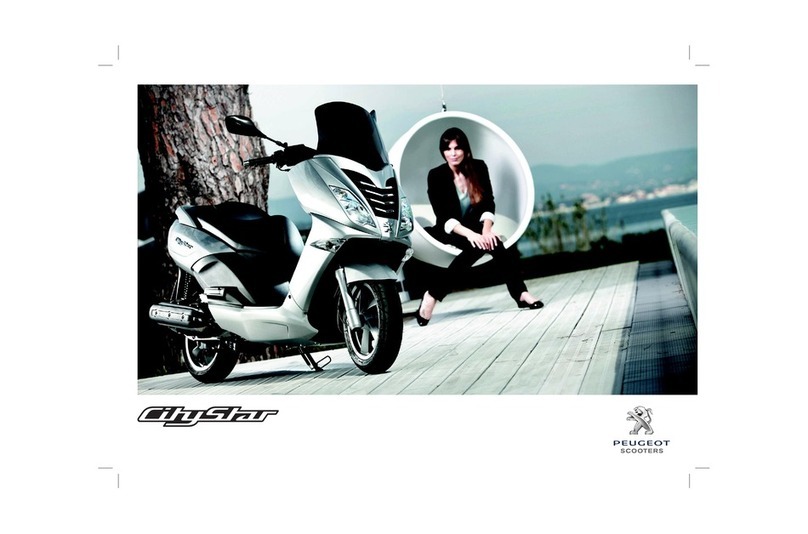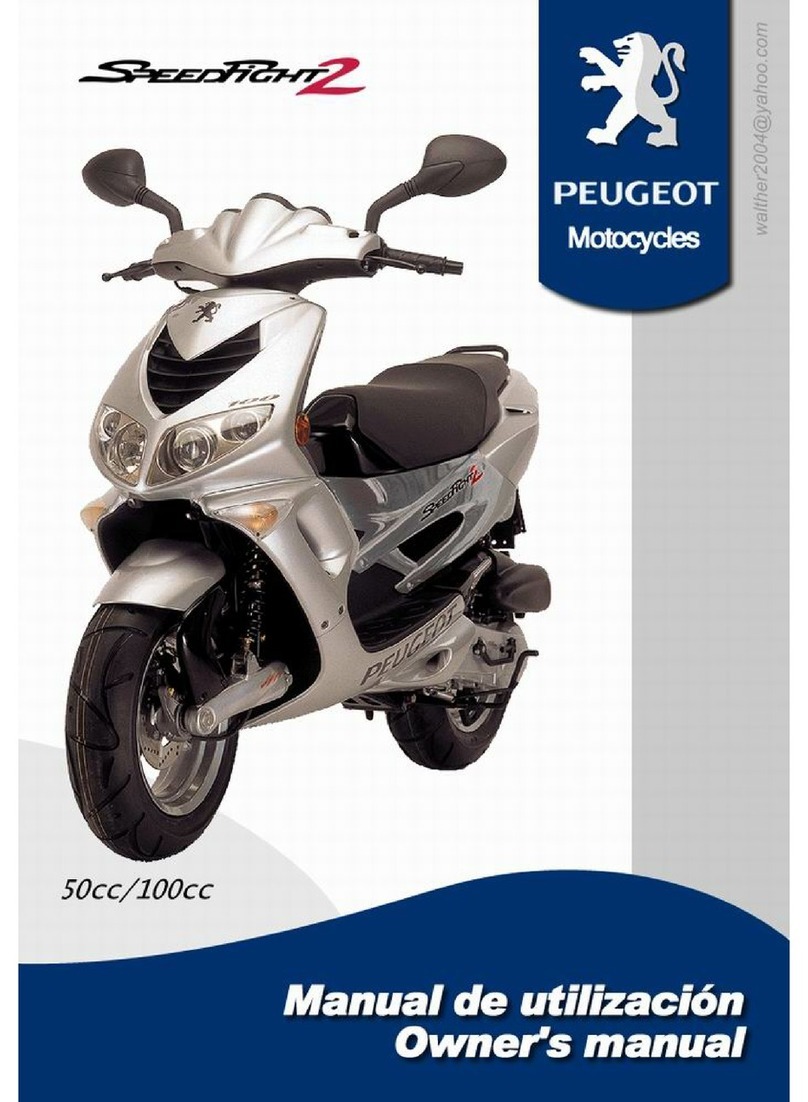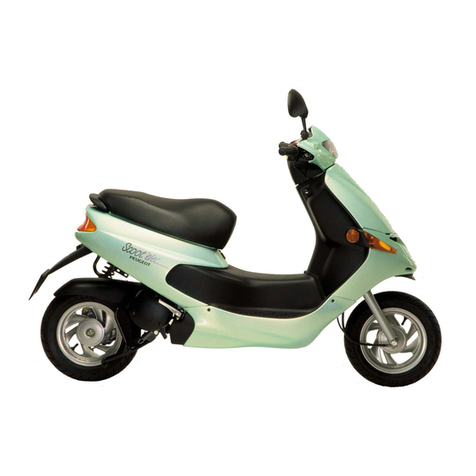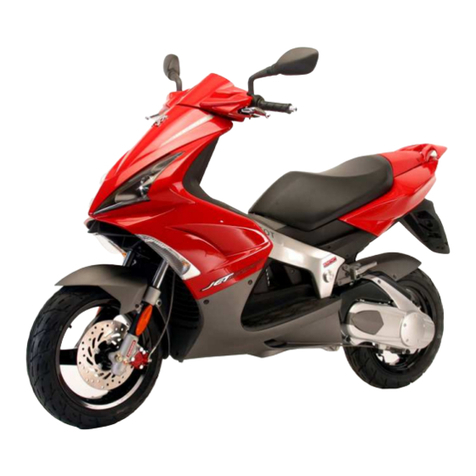0.10
Modeldevelopment
Speedfight model development
Speedfight50
The first Speedfight model was the
Speedfight 50 introducedinDecember 1996. It
was availablewith a liquid-cooled, 50 cc two-
stroke engine, monolever front suspension,
discfront brakeanddrum rear brake.
Available infour colours: ExcaliberSilver,
Torero Red, metallicblackandblue/yellow.
Speedfight50LCD and LCDP
lntroducedin November 1997. It was fltted
with a liquid-cooled two-stroke engine, but
differedfromtheoriginalSpeedfight50 model
in its use of a rear disc brake. New style
mirrorswere fitted.
The LCDP had a steeringlock, transponder
ignition immobiliserand Boalock as standard
equipment. The Boa lockwas available as an
optionalextraonthe LCD model.
Available in six colours: Excaliber Silver,
Torero Red, metallic black, blue/yellow,
GrenadeRed/silver andamber/silver.
The modelwas redesignatedSpeedfight50
LBD and LBDP inNovember1999.
Speedfight50MP
lntroducedin November 1998. It was fitted
with an air-cooled two-stroke engine and
drum rear brake, but was otherwise a similar
specificationtothe LCDP model.
Initially available in Torero Red, Excaliber
Silver, Night Blue and metallic black,then the
colourswere revisedinNovember 1999inline
with LCD and LCDPmodels.
The modelwas redesignatedSpeedfight50
BP inNovember1999.
models, with the addition of a competition
style exhaust, rear spoiler and aluminium
footboardtrims. Itwas availableinPulsor Blue
with Prostdecals.
An air-cooledvariant, the Prost 50 AC, was
introduced in November 1999 and the liquid-
cooledvariant was redesignatedthe
Prost
50LC.
SpeedfightX-Team
lntroducedin May 1999. Same specification
as the MP model with blue, white and red
colour scheme. Competition style exhaust,
rear spoiler andaluminiumfootboardtrims.
A liquid-cooledvariant with disc rear brake,
the X-Team LBDP, was introduced in
November 1999 and the air-cooled variant
was redesignatedtheX-Team BP.
Speedfight 100
The Speedfight 100 was introduced in
August 1997. Ithasan air-cooled 100cctwo-
stroke engine, disc brakesfront and rear, an
immobiliser and Boa lock, and was available
in metallic black, Excaliber Silver, Torero Red
andNight Blue.
New mirrorsand an additionalcolour option
(Grenade Red)were introducedNovember 1997.
In November 1999, the colour range was
revisedtoNight BlueandGrenadeRedandthe
modelwas redesignatedtheSpeedfight 100P.
SpeedfightProst 100
lntroducedin May 1999. Samespecification
as the Speedfight 100 plus rear spoiler and
aluminium footboard trims. Same colour
schemeas the Prost 50.
model were Night Blue, Grenade Red and
Technium Grey.
In November 2000, an additional colour
option(AcidGreen)was introducedforthe50
cc
models, and the colour range for the 100 cc
modelswas revisedto Pulsar Blue, Black and
Technium Grey. At the same time, air-cooled
models previously designated M(P) and B(P)
were redesignated N(P), and liquid-cooled
models previously designated LCDP and LBDP
were redesignatedLNDP. 2002 models were
designated E(P) and LEDP. The Silver Sport
colour option was introducedin2003 for both
50ccand 100ccvariants.
Speedfight2 X-Race 50NP and
50LNDP
lntroducedin November2000 in air-cooled
(NP) and liquid-cooled(LNDP) variants. Apart
from the different engines, both models had
the same specificationas the X-Team LNDP
(formerly LBDP), with a new Pulsar Blue/
orangecolour scheme.
Speedfight2 X-Team 100and
X-Race 100
lntroduced in November 2000. Both
models had the same engine and specifi-
cation as the Speedfight 2 100, with the
addition of a rear spoiler and aluminium
footboard trims. The X-Team 100 had the
same colour scheme as the 50 cc X-Team
andtheX-Race 100hadthe new Pulsar Blue/
orangecolourscheme.
Speedfight
2
WRC
206
lntroducedin November 2001 in both50 cc
Speedfight50M
lntroduced in November 1998. Same
specification and colours as the MP model
but without the immobiliser
-
Boa lock
available as an optional extra. Redesignated
Speedfight50 B in November1999.
In November 1999, the colour range for all
the 50 cc Speedfight models, with the
exception of the Prost and X-Team, was
revised to amber/silver, metallic black/silver,
Night Blue/silver and GrenadeRed/silver.
SpeedfightProst 50 LCD and
LCDP
lntroducedin November1998. Prost model
was based on the existing LCD and LCDP
Speedfight2
The entire Speedfight range was revisedin
March2000 with new bodystyling, headlights
and instrument panel, re-engineered
monolever front suspension and uprated
shock absorbers front and rear. The 50 cc
modelscontinuedto be available in air- and
liquid-cooledtwo-stroke engine variants, and
the 100 cc models were available with air-
cooledtwo-strokeenginesonly.
Machines fitted with a transponder ignition
immobiliser and Boa lock as standard
continued to be identified with the model
suffix 'P'.
Colour options for the 50 cc models were
Torero Red, Magic Blue, Technium Grey and
FormulaYellow. Colour optionsforthe 100cc
and 100cc variantsto commemoratePeugeot's
success inthe World RallyChampionship.
The 50 cc model had the same
specificationand liquid-cooledengine as the
X-Race 50, and the 100 cc model had the
same engine and specification as the X-Race
100. Both modelshad a new Technium Silver
colour schemeand206 graphics.
Speedfight2 Furious
lntroducedin November 2001 in both50 cc
and 100 cc variants, the Furious featured
motorcycle-style handlebars and digital
instrument display. The 50 cc model was
available with either an air- or liquid-cooled
engine, the 100 cc model had an air-cooled
engine.
